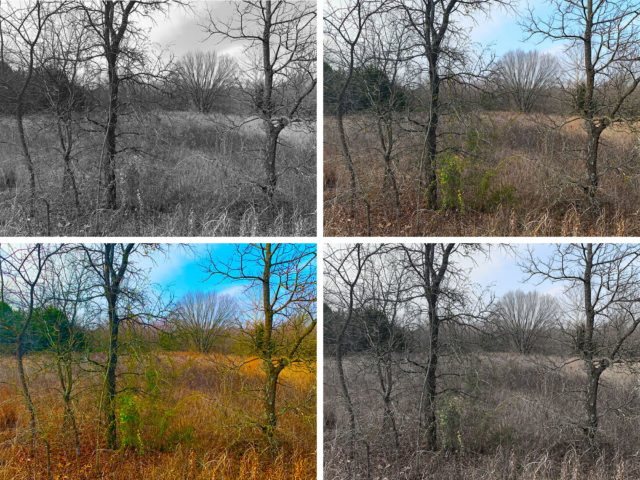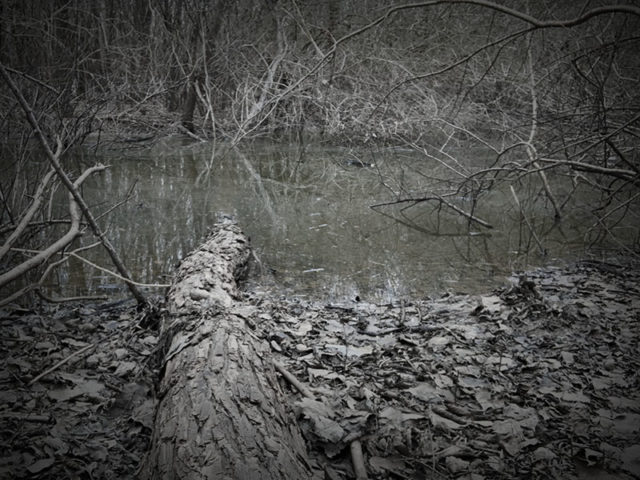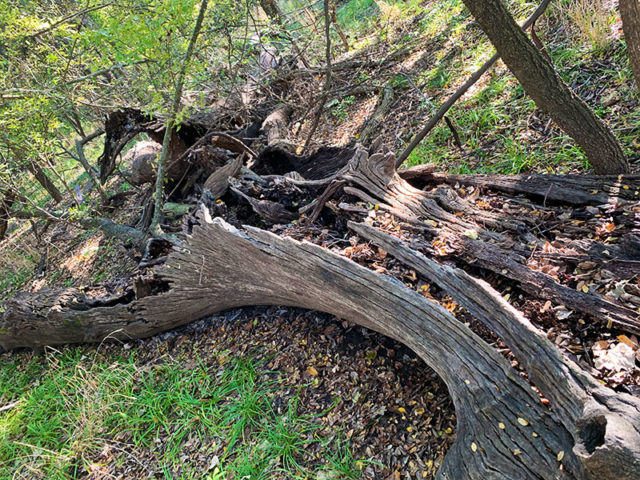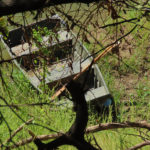Dateline – Winter 2020 – Denton, County
Camera trapping in North Texas is always an enjoyable pursuit—especially when you have an interest in learning more about our local mammals.Here in DFW we have a unique mix species including everything from the common-but-interesting to the uncommon-and-very-interesting, and everything in between. There are plenty of fascinating animals here to make installing a motion-triggered trail camera well worth the effort.

experience the stark beauty of a North Texas Winter!
Click to Enlarge
The old reliables can be photographed just about anywhere in the metroplex you might decide to place a trail camera. Critters like the Eastern Cottontail, Common Raccoon, Virginia Opossum, Striped Skunk, Fox Squirrel, Nine-banded Armadillo, and even Coyotes, Gray Foxes, and Bobcats are relatively easy to coax in front of a camera trap. Most of these can be recorded without even having to venture outside your typical North Texas neighborhood.

Other animals like the White-tailed Deer, Wild Pigs, River Otters, American Beavers, and Nutria are locally abundant—you typically find these critters only in certain places around the metroplex. To get pictures of these species you may be required to travel to more specific habitats. Riparian forests and wetlands located near local lakes, rivers, and streams are where these animals are most apt to be found.
Then there is a third class of rarely seen mammal. These critters are sometimes shown to range into the metroplex on distribution maps published by organizations that document such things. Even so, current observations of these animals in DFW are rare or nonexistent.
Here in the Dallas/Fort Worth, these are some the animals I might assign to this list: Long-tailed Weasel, Ringtail, Muskrat, Badger, Hog-nosed Skunk, Eastern Spotted Skunk, American Badger, Southern Flying Squirrel, American Mink, Red Fox, Thirteen-lined Ground Squirrel, Black-tailed Jackrabbit, and Swamp Rabbit.
Some of these critters are surely here in North Texas, and are just challenging to camera trap. Others may have been here in the past, but have since been extirpated. Others still, may never actually have been here to begin with.

For the last year or so these rarely seen mammals are the ones I have been pursuing with my camera trapping efforts. Unfortunately, I cannot report a lot of success. There seems to be a couple of possible reasons why I have been having difficulty recording pictures of these particular animals…
- They may not actually be here and present in the metroplex.
- They are here but in limited numbers and locations, and I’m looking in the wrong places
- They are here and I am not using the right techniques to successfully record their photographs.

I suspect the actual answer may be a combination of all three factors, but it is my hope that the last one is the most responsible for my bad luck. If I am doing things wrong, then there is the possibility that I may eventually learn how to do them the right way. With a little luck, I may stumble on across a few of these critters by accident, and then leverage those encounters to develop techniques for securing more and better images in the future.
To this end, I have been exploring new areas and camera trapping novel situations. Just getting to these places is half the fun. Winter’s lack of dense vegetation and biting insects makes it all a bit easier. Backwoods deadfalls, brush piles, and backwoods sloughs have been the focus of my efforts for several months now. I have found these new environs to be interesting and fun to explore.


Even so, I have to admit, that it can be difficult to ignore obvious sign from our more common animals when setting these camera traps. It’s not easy to dismiss a well worn deer trail in favor of a new situations that may or may not produce good results. Still, I try.
As I mentioned eatrlier, I still haven’t yet made much headway with these projects. Fortunately, there is progress to be made even in failure. I am slowly learning what does not work. The upside is that every new camera trap seems to reveal something new and interesting about even our most common critters. It’s always enjoyable to look at the pictures and videos from a productive camera trap set, regardless of what kind of animals were recorded.
These efforts are where the pictures and videos included in this article came from. More evidence that camera trapping in North Texas is always a worthwhile pursuit!
In the video below you will find snippets of almost every animal that can be found in this part of the woods. Included in this video is footage of Fox Squirrels, Coyotes, Great Blue Herons, White-tailed Deer, Virginia Opossums, Wood Ducks, American Beaver, Common Raccoons, and Bobcats. Many of the recorded behaviors are fascinating to watch.
In the next video we take a closer look a the American Beaver. The footage in this recording shows the slough’s resident Beavers dealing with changing water levels while attempting to build territory-defining scent mounds.
This deep woods slough is home to a nice populations of exotic-looking and beautifully plumaged Wood Ducks. During daylight hours these ducks rule the waves. When darkness falls they leave water for the safety of the trees, yielding the slough to the mammals for the night.
I’m always impressed with the Raccoon’s ability to operate in near total darkness. Watch in the video below as multiple Raccoons go about their business in the murk of deep night, pausing only occasionally to give my trail camera a thorough once-over.
Before I close this article, how about one last look at the deep woods? Click the image below for the full panorama…








Chris, an animal I have not seen you include in your posts is the Eastern Woodrat. They used to be quite common in riparian woodlands in Denton County, but not readily seen or photographed. Have you any experience with them?
What camera are you using for these wonderful videos?
CORE DS LOW GLOW TRAIL CAMERA…
https://www.bushnell.com/trail-cameras/core/core-ds-low-glow-trail-camera/PB-119975C.html